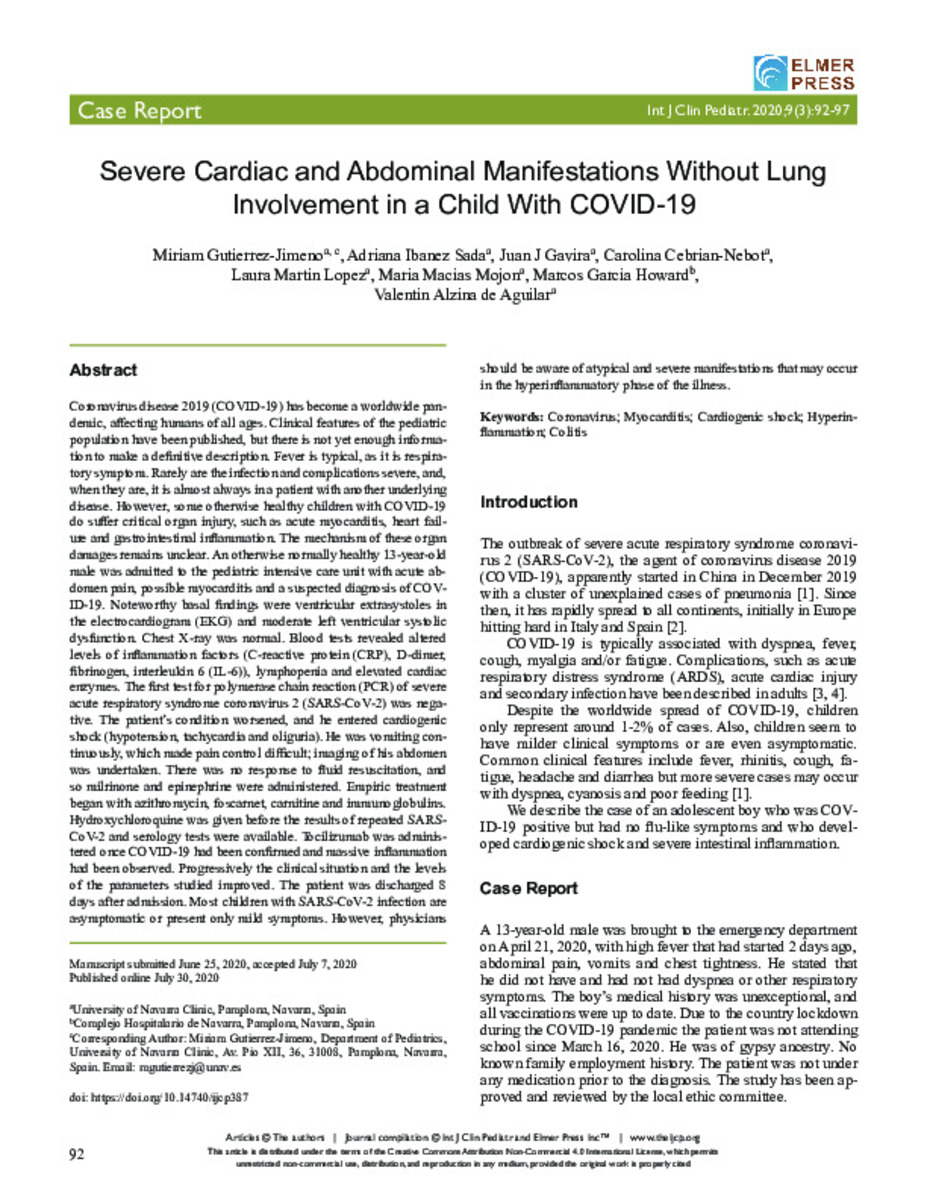Severe cardiac and abdominal manifestations without lung involvement in a child With COVID-19
Palabras clave :
Coronavirus
Myocarditis
Cardiogenic shock
Hyperinflammation
Colitis
Fecha de publicación :
2020
Nota:
Creative Commons Attribution Non-Commercial 4.0 International License
Cita:
Gutierrez-Jimeno, M. (Miriam); Ibáñez-Sada, A. (Adriana); Gavira, J.J. (Juan José); et al. "Severe Cardiac and Abdominal Manifestations Without Lung Involvement in a Child With COVID-19". International Journal of Clinical Pediatrics. 9 (3), 2020, 92 - 97
Aparece en las colecciones:
Estadísticas e impacto
0 citas en

0 citas en

Los ítems de Dadun están protegidos por copyright, con todos los derechos reservados, a menos que se indique lo contrario.








